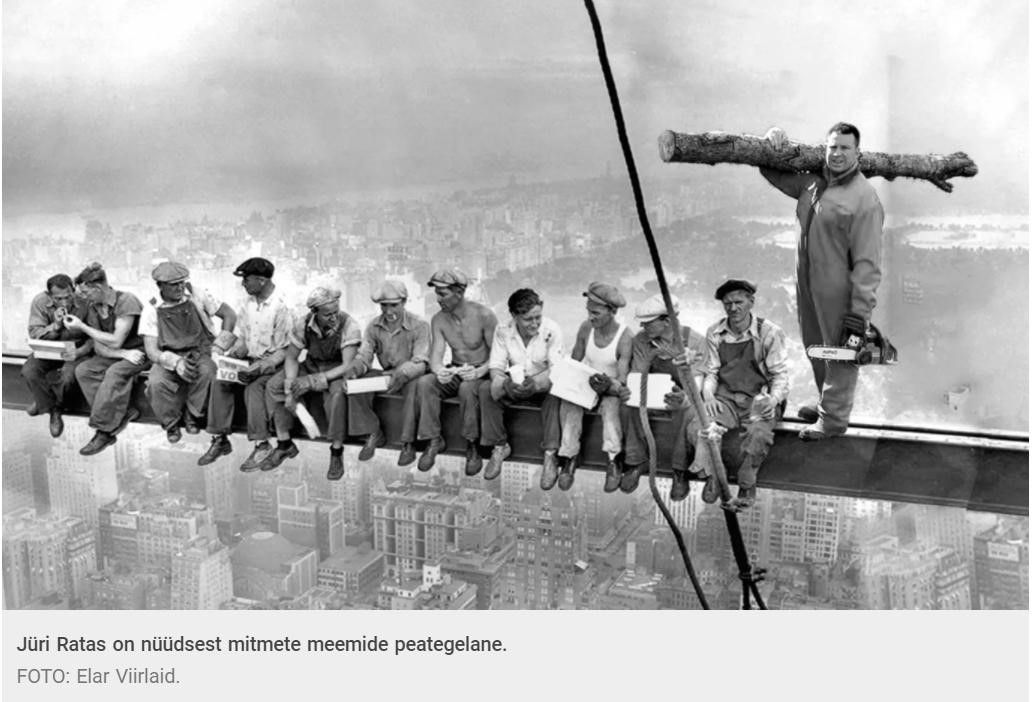© Elar Viirlaid / Elu24. Source.
What do we see?
On May 1, 2021 the former Estonian Prime minister and currently leader of Parliament posted several photos of himself in the woods captioned with the words: “In the forest, a windbreak is cleared, sauna logs are cut for the winter, potato furrows are prepared and now the doors of the barn … nice!”. One of the photos, picturing Ratas with a log on his shoulder and a saw in his hand immediately went viral on Estonian internet. Numerous image macros were created, most of which displaced Ratas and his log from the forest and put him in other incongruous environments. For example, Estonian satirical news portal Lugejakiri claimed that Ratas arrived at his workplace at Parliament with a log and a saw. Other image macros placed him even further away from the original context, putting Ratas alongside Joe Biden and claiming that this is the way the Estonian strain [of COVID-19] is spreading in the USA. The collage presented here combines Ratas’s image with a photo that is both geographically and historically distant from it .
What public issue is addressed here?
The original photos of Jüri Ratas evoked some Estonian social and gender stereotypes. Spending a weekend in the forest doing physical work resonates well with the image of a true Estonian man; the photos and the caption by Jüri Ratas clearly suggest that he is pleased to conform to it. His wish to show himself as “a normal person” at an uneasy moment in his political career (he had to resign as prime minister several months before) was met with sympathy by some, but also inspired a lot of humour.
What does humour do?
The fact that Jüri Ratas and his log have become a meme on Estonian Internet is an indication of tensions and incongruities that arise when a politician’s private life is showcased publically. Selva and Caro (2017: 913) argue that letting potential voters take a look at the backstage of a politician’s life can humanise politicians and make them seem closer to their voters. However, this can also inspire humorous reactions if the backstage image is in sharp contrast with the normally neat and official visual representations of a politician. In the case of memes featuring Ratas, this contrast was deliberately taken to its extreme by placing the image in the most inappropriate settings. This example shows the vagueness of the boundary between successful political branding that is based on the privatization of a politician’s image (i.e. focusing on politicians’ private lives rather than political agenda, see Van-Aelst et al. 2011) and making the politician an object of ridicule.
Bibliography
Selva-Ruiz, David, and Lucía Caro-Castaño. (2017). The use of Instagram as a political communication channel by Spanish deputies: The humanization strategy in the “old” and the “new” politics. El profesional de la información, 26(5), 903-915.
Van-Aelst, Peter; Sheafer, Tamir; Stanyer, James (2011). “The personalization of mediated political communications: a review of concepts, operationalizations and key findings”. Journalism, v. 13, n. 2, pp. 203-220.
